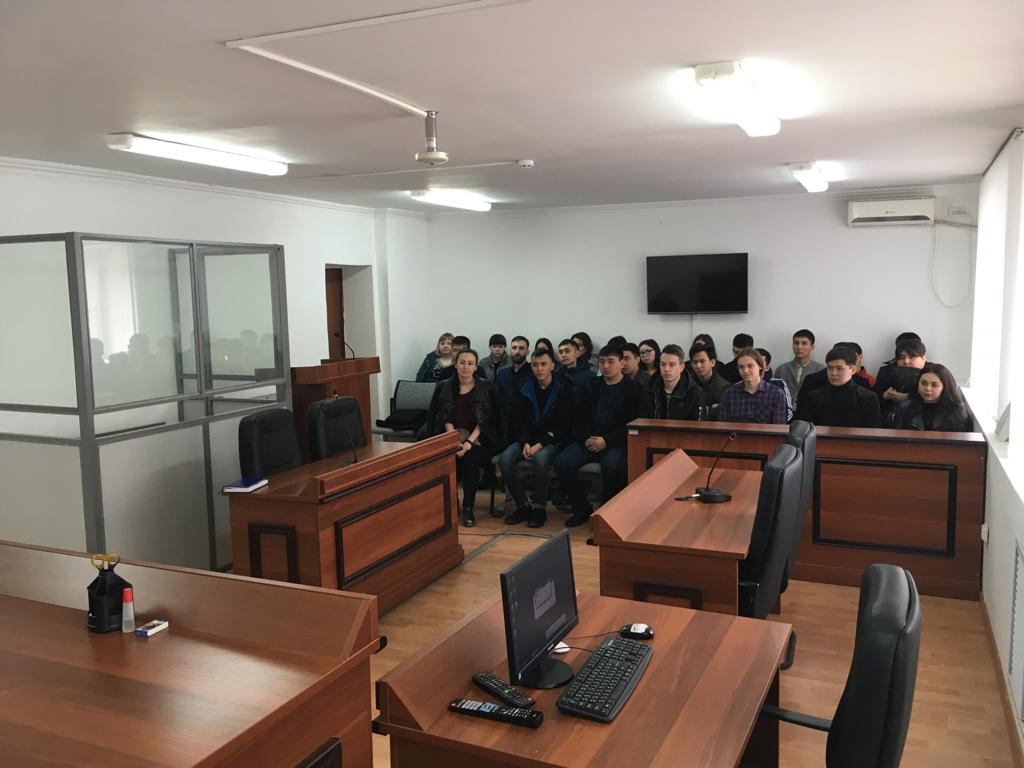Let's continue the ecology lesson!
 On October 21st, students of the “Environment and Chemical Technologies” department was on the open day of the Pavlodar Aluminum Plant. Students are still mastering the basics of this demanded profession, the profession of ecologist at the Innovative University of Eurasia, and it was very interesting and useful for them to see the work of a large industrial enterprise from the inside.
On October 21st, students of the “Environment and Chemical Technologies” department was on the open day of the Pavlodar Aluminum Plant. Students are still mastering the basics of this demanded profession, the profession of ecologist at the Innovative University of Eurasia, and it was very interesting and useful for them to see the work of a large industrial enterprise from the inside.
The tour route covered the most important areas of alumina production. What does the raw material for future alumina look like? What kind of giant is it, who turns multi-ton cars with bauxite easily like matchboxes? How do ore stones turn into a liquid? How many tons of dust do factory filters catch? And is it true that the temperature of the “newly made” alumina exceeds 700 degrees at the outlet? These and many other questions worried future ecologists. And for each of them, the plant experts gave comprehensive answers. Moreover, as a student of group 302 of the “Ecology specialty”, Khamit Yevloyev mentioned, everything was explained very clear and intelligible - now the guys have a complete idea of the technology for the production of alumina from bauxite. Like the rest of the guys, Hamit had never been to such a huge enterprise. And much of what he saw at the Pavlodar Aluminium Plant was a curiosity. The visit to the firing site No. 5 of the hydrometallurgical workshop was especially impressive. 


 “The employee scooped up a portion of alumina from a red-hot furnace in a special bucket in front of our eyes and carefully poured it into a small bowl,” says Hamit. - In appearance this white powder seemed as cold as snow, but what was our surprise when an abandoned piece of paper flashed on it: the temperature of this “snow” is under 800 degrees!
“The employee scooped up a portion of alumina from a red-hot furnace in a special bucket in front of our eyes and carefully poured it into a small bowl,” says Hamit. - In appearance this white powder seemed as cold as snow, but what was our surprise when an abandoned piece of paper flashed on it: the temperature of this “snow” is under 800 degrees!
Students have learned about this from Andrei Makarchuk, the head of the HMU calcination site. Acting as a guide, he briefly acquainted the guests with the principle of operation of this unit, explained what stages the alumina goes along the way from the furnace, where it is dried and calcined at a very high temperature, before loading into big bags or cement hoppers for shipment to the consumer. He also told how electrostatic precipitators work in this workshop. This question was especially interesting for future ecologists.
In general, the tour was interesting and familiarity with the company left the best impressions.
Khasenova Maral Torgaevna

